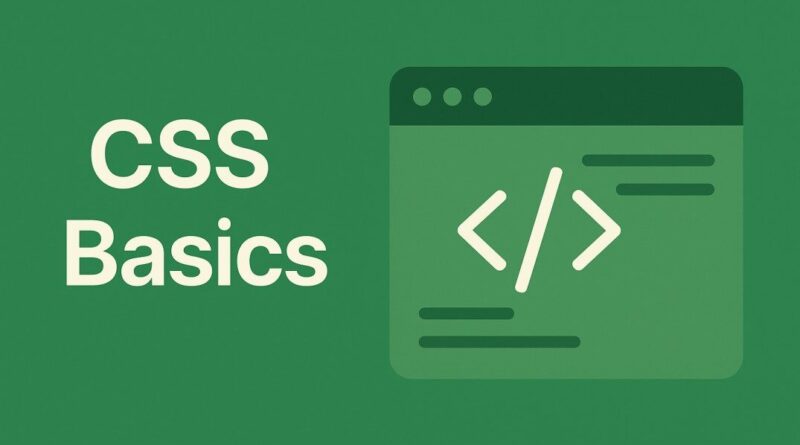CSS – Master Responsive Design with CSS Flexbox: Your Guide to Modern Layouts
Master Responsive Design with CSS Flexbox: Your Guide to Modern Layouts
In today’s digital world, a stunning and adaptable website is no longer a luxury—it’s a necessity. With countless devices and screen sizes out there, ensuring your content looks fantastic everywhere can feel like a daunting task. But what if there was a powerful CSS tool that made building flexible and responsive layouts a breeze? Enter CSS Flexbox (Flexible Box Layout)!
If you’ve ever struggled with aligning items, distributing space, or creating dynamic grids, then Flexbox is about to become your new best friend. It’s an essential skill for any web developer aiming to create modern, user-friendly experiences.
Why Flexbox is a Game-Changer for Web Design
Before Flexbox, achieving complex layouts often involved convoluted floats, clunky positioning, or table-based designs (shudder!). These methods were often fragile, hard to maintain, and certainly not built for responsiveness. Flexbox, however, was designed from the ground up to provide a more efficient way to lay out, align, and distribute space among items within a container, even when their size is unknown or dynamic.
It’s all about making your elements “flexible”, allowing them to stretch or shrink to fit the available space, making your website genuinely responsive and incredibly adaptable. This translates to a superb user experience, no matter how your visitors are accessing your content.
Diving into the Core Concepts: The Flexbox Family
Understanding Flexbox starts with two fundamental players:
- The Flex Container: This is the parent element that holds all your flexible items. Think of it as the stage on which your elements perform. You activate Flexbox by simply adding
display: flex;(ordisplay: inline-flex;for inline containers) to this element. Once declared, all its direct children become flex items. - The Flex Items: These are the direct children of the flex container. They are the elements that will be arranged and manipulated by the Flexbox properties.
Within this relationship, Flexbox operates along two perpendicular axes:
- The Main Axis: This is the primary direction along which your flex items are laid out. By default, it runs horizontally (left to right).
- The Cross Axis: This axis is perpendicular to the main axis. By default, it runs vertically (top to bottom).
Understanding these axes is crucial because many Flexbox properties are defined in relation to them.
Mastering the Container Properties: Orchestrating Your Layout
The true power of Flexbox often lies in the properties you apply to the flex container. These properties allow you to control the overall arrangement and flow of your flex items.
display: flex;(ordisplay: inline-flex;): The magic switch that turns an ordinary element into a flex container. Without this, Flexbox won’t work!flex-direction: This property determines the direction of the main axis. Want your items to stack vertically instead of horizontally? Useflex-direction: column;. Other values includerow(default),row-reverse, andcolumn-reverse.justify-content: This is your go-to for distributing space along the main axis. Want items spaced evenly?justify-content: space-between;. Want them centered?justify-content: center;. Other popular values includeflex-start,flex-end, andspace-around.align-items: Controls how items are aligned along the cross axis. Imagine centering items vertically within your container:align-items: center;. Other useful values areflex-start,flex-end,stretch(default), andbaseline.flex-wrap: What happens if your items run out of space on one line?flex-wrap: wrap;tells them to move to the next line, creating a multi-line flex container.nowrap(default) keeps them all on one line, potentially causing overflow.align-content: This property is specifically for controlling the spacing between lines when you have multiple lines of flex items (i.e., whenflex-wrap: wrap;is active). It works similar tojustify-contentbut on the cross axis for wrapped lines.
Fine-Tuning with Item Properties: Empowering Individual Elements
While container properties dictate the overall flow, sometimes you need to adjust individual flex items. That’s where item properties come in handy:
flex-grow: This property dictates how much a flex item will grow relative to the other flex items when there’s extra space in the container. Aflex-growof1means it will take up one portion of the available extra space.flex-shrink: The opposite offlex-grow, this property determines how much a flex item will shrink relative to other flex items when there’s not enough space. A higher value means it will shrink more aggressively.flex-basis: This defines the initial size of a flex item before any growing or shrinking occurs. You can set it using length units likepx,%, orauto(default).order: This remarkably simple yet powerful property allows you to change the visual order of flex items, regardless of their source order in the HTML. Items are ordered from lowest to highestordervalue.align-self: This property allows you to override thealign-itemsproperty for a single flex item. For example, if your container hasalign-items: center;, but you want one specific item to be atflex-start,align-self: flex-start;will do the trick.
Building Common Layouts with Ease: Practical Applications
Now for the exciting part! Let’s see how Flexbox empowers you to build common, beautiful, and responsive layouts:
- Navigation Bars: Creating a perfectly spaced and aligned navigation bar is a classic Flexbox use case. By setting
display: flex;on your<ul>and usingjustify-content: space-around;orspace-between;on the<li>items, you can achieve elegant navigation in minutes. - Card Grids: Imagine a grid of product cards, blog posts, or team members. With Flexbox, you can easily create responsive card grids that adapt beautifully to different screen sizes. Set
display: flex;on your grid container,flex-wrap: wrap;, and then useflex-basisandflex-growon your individual cards to control their sizing and responsiveness.
Unlock Your Design Potential with Flexbox!
Flexbox is more than just a CSS property; it’s a paradigm shift in how we approach web layout. By mastering its core concepts and properties, you’ll gain the ability to create dynamic, robust, and truly responsive designs with remarkable efficiency.
So, what are you waiting for? Dive in, experiment with these properties, and start building the stunning, flexible web experiences your users deserve. The world of modern, responsive layouts is at your fingertips, thanks to the incredible power of CSS Flexbox! Happy coding!



